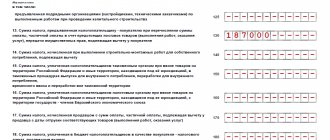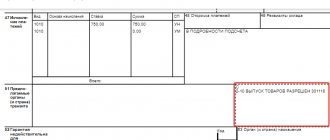Publication date 10/12/2020
4614 views
News Import accounting is often a complex and confusing procedure. However, knowledge of the specifics of legislation and standard procedures will allow you to protect yourself from mistakes and avoid troubles with the tax authorities. The most popular in Kazakhstan are all kinds of goods imported from neighboring countries that are members of the EAEU. Find out more about how to take into account the import of goods if they originate from EAEU countries...
Rules for importing goods into the Russian Federation
The rules that apply when calculating VAT on goods transported to the territory of the Russian Federation are determined by the presence of customs at the state border. Tax is calculated at the time of import of goods.
The procedure for calculating and paying royalties is subject to customs legislation. The tax is paid to the customs service.
Between a number of states that were previously part of the Soviet Union, customs was abolished.
These states were united into the EAEU - the Eurasian Economic Union. Now the import and export of goods across the borders of the countries participating in this treaty follow the same rules of interaction.
These rules were set out in the agreement on the EAEU, which was concluded in Astana in 2014.
You can read the text of the agreement on our website.
When importing from Kazakhstan, as well as when importing goods into Kazakhstan from Russia, the following customs rules are now relevant in relation to VAT:
- taking into account the absence of customs, the importer undertakes to independently calculate VAT and pay it;
- the tax base is calculated taking into account the cost of exported products;
- the price indicated in foreign currency is recalculated at the exchange rate on the date the goods were accepted for accounting;
- the optimal period is the 20th day of the month, which follows the month in which the export products were imported. If the end of the period coincides with a weekend or holiday, then for the Russian Federation it is possible to shift to another date that corresponds to the nearest weekday.
More detailed rules can be found by following the link.
It is also recommended that you read Article 6.1 of the Tax Code of the Russian Federation.
Watch the video: registration of goods when importing from EAEU countries.
Read on our website: list of prohibited goods for import into Russia.
Error when calculating VAT
When importing goods from Kazakhstan, the seller can set the amount of VAT according to documents in accordance with the laws in force in the country, so the buyer must determine the VAT independently and pay it to the Federal Tax Service.
The tax base must be calculated on the date the goods are accepted for accounting based on the cost of the goods.
If the goods are purchased for foreign currency, then the cost in rubles is determined by recalculating the cost in foreign currency at the exchange rate of the Central Bank of the Russian Federation on the date of acceptance of imports for accounting. This base must be multiplied by the VAT rate (10% or 18%) and determine the amount of tax to be paid.
Procedure for payment of VAT
When goods are imported into Russia, VAT is paid by the importer. This applies to everyone who makes purchases in Russia.
The difference is that when transporting products from countries that do not belong to the member countries of the customs union, the tax is paid when passing customs control.
When importing from the EAEU, money is transferred by the entrepreneur to the budget through the Federal Tax Service.
This applies to goods that were produced on the territory of states that are members of the EAEU and are put into free circulation on the territory of the Eurasian Economic Union.
Payers of VAT on imported goods
All organizations and individual entrepreneurs (even those using a special regime or exempt from VAT) importing goods from the EAEU countries, including Kazakhstan, must pay VAT in accordance with clause 13 of Appendix 18 to the Treaty on the EAEU and Art. 346.1, Art. 346.11, Art. 346.26, Art. 145 Tax Code of the Russian Federation.
Persons who purchased goods for personal use and are not related to business activities in accordance with clause 6 of Art. are not payers of VAT when importing from Kazakhstan. 72 of the Treaty on the Eurasian Economic Union.
When calculating VAT when importing goods into Russia from countries participating in the Customs Union, you must be guided by the Treaty on the Eurasian Economic Union and Appendix 18 to the Treaty on the Eurasian Economic Union.
Deputy Director of the Department of Tax and Customs Policy of the Ministry of Finance of Russia O. Tsibizova
How is tax calculated?
The price of products that are imported into Russia can be determined under a sales contract. The transaction price reflected in the contract and the one paid to the seller by the buyer are taken into account. The tax base for VAT does not increase due to the presence of expenses for the transportation of goods.
The final tax amount that is paid to the budget can be calculated using the following formula:
price of imported products + excise taxes (relevant for excisable products) x tax rate (10–18%).
Probability of error
The tax amount is billed by the seller according to the documentation, in accordance with current legislation.
Against this background, the person purchasing the goods determines the VAT independently and then makes payments to the Federal Tax Service.
The tax base is necessarily calculated on the date when the goods were accepted for accounting.
It is necessary to proceed from the final price of the product. If it was purchased for foreign currency, then the amount in rubles can be determined by converting it into foreign currency at the Central Bank exchange rate. In this case, the date when the imported products were accepted for accounting is taken into account.
This base is multiplied by the tax rate. Then the amount to be deposited is determined.
VAT calculation
The cost of imported goods is determined under a purchase and sale (manufacturing) contract and their value is considered to be the transaction price reflected in the contract, which the buyer pays to the seller. Transportation costs do not increase the VAT tax base if these costs are not included in the cost of goods. The amount of VAT paid to the budget when importing goods from Kazakhstan is calculated as follows:
VAT amount = (Cost of imported goods + Excise taxes (if the goods are excisable) * VAT rate (10% or 18%)
Accounting for imported goods from the Republic of Kazakhstan
The order is presented in the table:
| Operation | Debit | Credit |
| Price of goods imported from the Republic of Kazakhstan | 42 | 61 |
| Paid imported products | 61 | 52 |
| Tax accrued for payment | 20 | 69 |
| Return of sales proceeds | 63 | 90-2 |
Example.
In July, Slon LLC imported products from Kazakhstan to Russia for further resale. The cost under the supply agreement is 500.0 thousand rubles.
The amount of VAT that was paid by the company to the budget of the Russian Federation amounted to 90.0 thousand rubles. (at a tax rate of 18%).
Certain aspects of the procedure for collecting VAT when importing goods from Russia to Kazakhstan
From the contents of the Agreement it follows that VAT is charged, among other things, on the export and import (movement) of goods from the territory of one CU member state to the territory of another CU member state.
EXPORT / IMPORT OF GOODS: TERMS
Agreement on the principles of collecting indirect taxes on the export and import of goods, performance of work, provision of services in the Customs Union:
– export of goods – export of goods sold by taxpayers (payers) from the territory of one state – a member of the Customs Union to the territory of another state – a member of the Customs Union;
– import of goods – import of goods by taxpayers (payers) from the territory of one state – a member of the Customs Union to the territory of another state – a member of the Customs Union, regardless of the reasons for the movement of goods.
Art. 276-4 of the Code of the Republic of Kazakhstan “On taxes and other obligatory payments to the budget”:
– export of goods from the territory of the Republic of Kazakhstan to the territory of another state - a member of the Customs Union – turnover of sales of goods;
– taxable import – import of goods into the territory of the Republic of Kazakhstan.
It is noteworthy that the recognition of the movement of goods as export is directly related to their sale, which in the general understanding presupposes the existence of taxable turnover and the completion of a transaction related to the transfer of ownership.
At the same time, to recognize the same movement of goods as import, the very fact of their importation from the territory of one CU member state to the territory of another is sufficient.
Similar definitions of export (import) of goods between states within the borders of the Customs Union are contained in the national legislation of the Republic of Kazakhstan (hereinafter referred to as the RK).
Thus, in accordance with the Agreement and the legislation of the Republic of Kazakhstan, import for the purpose of collecting VAT is any movement of goods, the consequence of which is their import into the territory of Kazakhstan.
Differences in the definitions of the concepts of export and import of goods within the borders of the Customs Union for the purpose of collecting VAT do not matter if the basis for the movement of goods is their sale by a taxpayer of one state to a taxpayer of another state. In this case of movement of goods, their export from the territory of one state - a member of the Customs Union is considered an export of goods, in respect of which, in accordance with the Agreement (Article 2), a zero VAT rate is applied.
At the same time, the import of goods into the territory of the Republic of Kazakhstan in connection with their sale is considered import, on which the importer pays VAT in accordance with the current tax rates.
Features of the transfer of goods by a legal entity to a structural unit in Kazakhstan
The movement of goods within the borders of the Customs Union is not always associated with their sale by taxpayers of the member states of the Customs Union.
An illustrative example is the movement of goods between CU member states in connection with the transfer of goods by a legal entity, a resident of a CU member state, to its Kazakhstan branch for the purpose of their further sale to consumers in the territory of the Republic of Kazakhstan.
With such a movement, there is no fact of implementation, which presupposes the completion of a transaction, the result of which is the transfer of ownership of goods, and VAT is a turnover tax. A branch of an organization, including a non-resident, is not a legal entity (Article 43 of the Civil Code of the Republic of Kazakhstan).
It is a separate, but still structural unit that represents and protects the interests of the legal entity that created the branch, making transactions and other legal actions that entail legal consequences for the legal entity itself.
The branch is not the owner of the property recorded on its balance sheet, transferred to it by a legal entity to perform part or all of its functions, including in the process of commercial activities.
Thus, when goods are transferred from a legal entity, a resident of a member state of the Customs Union, to its Kazakhstan branch, no sale of goods occurs. Their owner remains a non-resident organization that has created a separate division on the territory of Kazakhstan. Consequently, based on the definitions of the Agreement and the legislation of the Republic of Kazakhstan, such movement of goods in the absence of their sale cannot be recognized as an export of goods for the purposes of applying the zero VAT rate.
At the same time, since the consequence of the movement of goods between a legal entity and its branch is their importation into the territory of Kazakhstan, for the purpose of collecting VAT, such a transaction is recognized as the import of goods. Taking this into account, a legal entity transferring goods to its Kazakhstan branch (in accordance with Art.
276-2 of the Tax Code of the Republic of Kazakhstan - VAT payer), when importing goods into the territory of Kazakhstan, must calculate and pay VAT to the budget of the Republic of Kazakhstan.
This obligation follows from paragraph 1 of Article 2 of the Protocol on the procedure for collecting indirect taxes and the mechanism for monitoring their payment when exporting and importing goods in the Customs Union2 (hereinafter referred to as the Protocol) and paragraph 1 of Article 276-1 of the Tax Code of the Republic of Kazakhstan.
It is also possible that, based on the provisions of paragraph 3 of Article 1 of the Protocol, after 180 days from the date of shipment of goods to a taxpayer who has not submitted documents confirming the export of goods, the tax authority may make demands for the calculation and payment of VAT to the budget of the state party to the CU of which the resident is a resident. he is. The basis for this may be the absence of another procedure for collecting (exemption from payment) VAT on the export of goods not related to their sale. In such a situation, a non-resident moving goods from the territory of his CU member state to his Kazakh branch will be forced to pay VAT twice in the absence of sales of goods in the single customs territory. In addition, in accordance with the requirements of the Protocol and the tax legislation of the Republic of Kazakhstan, a non-resident taxpayer is obliged to submit to the Kazakhstan tax authority at the location of its branch a declaration in the established form and documents, including those that are the basis and confirmation of the movement of goods to the territory of the Republic of Kazakhstan. However, in our opinion, it will be difficult to properly fulfill the listed tax obligations, including those related to the calculation and payment of VAT when importing goods and submitting tax reports, when transferring goods by a non-resident taxpayer to its Kazakh branch for the following reasons. Neither the legislation of the Customs Union nor the national legislation of Kazakhstan determines the procedure for fulfilling such tax obligations in the event that the movement of goods does not occur in connection with their sale. Thus, in accordance with Article 2 of the Protocol and Article 276-8 of the Tax Code of the Republic of Kazakhstan, for the purposes of paying VAT when importing goods, the tax base is determined on the basis of the cost of the purchased goods, which is the transaction price payable to the supplier according to the terms of the contract. However, the transfer of goods by a legal entity to its branch is the movement of goods within one legal entity, without changing the owner, and it cannot be formalized as a transaction for the sale of goods between a legal entity and a structural unit representing its interests, although located in another CU member state. Accordingly, the methodology for determining the amount of taxable import of goods based on the transaction price, that is, on the basis of an agreement (contract), which can only be concluded between independent subjects of civil law relations, cannot be applied in the case of import of goods into Kazakhstan by a legal entity for its own structural unit.
In addition, when importing goods into Kazakhstan from the territory of the CU member states, the taxpayer is required to submit a declaration on indirect taxes on imported goods to the tax authority at his location. Simultaneously with this declaration, a strictly defined list of documents is submitted to the tax authority.
DOCUMENTS SUBMITTED WHEN IMPORTING Simultaneously with the VAT declaration when importing goods, the following must be submitted to the tax authority: – an application for the import of goods and payment of indirect taxes; – invoices issued upon shipment of goods in accordance with the legislation of the CU member state, if their issuance (extract) is provided for by the legislation of the CU member state; – an agreement (contract) on the basis of which goods imported into the territory of the Republic of Kazakhstan were purchased.
Among the documents there is a statement on the import of goods and payment of indirect taxes. Its form was approved by the Tax Committee of the Ministry of Finance of the Republic of Kazakhstan and provides that the buyer reflects information about the seller and buyer of imported goods, the essential terms of the transaction between them, including the price of the goods, according to the sales agreement.
This information must be documented by documents submitted simultaneously with the application, including the agreement on the basis of which goods imported into the Republic of Kazakhstan were purchased. However, as already noted, the basis for the movement of goods within one legal entity cannot be a sales agreement, just as invoices cannot be issued by a legal entity to its branch.
But in the absence of such documents, the corresponding columns of the application for the import of goods and payment of indirect taxes, the submission of which is mandatory when importing goods into the territory of the Republic of Kazakhstan, cannot be properly filled out.
And in practice, the Kazakh tax authorities refuse to accept blank applications without presenting the agreement (contract) on the basis of which the imported goods were purchased.
In turn, non-resident taxpayers carrying out their activities on the territory of Kazakhstan through a branch, in the absence of clear legal regulation of the procedure for collecting VAT and filing tax reports when moving goods between structural divisions of one legal entity, but crossing the border of the CU member states, are forced to seek options for meeting the requirements of tax authorities.
Paradoxical as it may be from a legal point of view, in order to fill out an application and submit a full package of documents provided for by the legislation of the Customs Union and the national legislation of Kazakhstan, in practice there are cases when the import of goods into the territory of Kazakhstan is formalized by an agreement between a legal entity and its Kazakh branch.
G.V. Balandina, partner, head of customs law and foreign trade regulation practice at Pepelyaev Group,
Honored Lawyer of the Russian Federation
I agree with my colleague that the freedom of movement of goods within the single territory of the Customs Union, legally and in fact for now, consists only of the abolition of customs clearance and customs control.
The agreements governing the collection of VAT within the Customs Union are more or less clear when the export of goods is accompanied by a purchase and sale transaction concluded between residents of Russia and Kazakhstan.
The development and complication of economic relations between economic entities, including the introduction of new business models for promoting goods and organizing sales, require more flexible regulatory regulation. When regulatory changes occur in such a short time and on such a scale, it is incredibly difficult to avoid legal gaps and conflicts.
It is important that the states that are members of the Customs Union and the Secretariat of the Customs Union Commission respond promptly and professionally to emerging problems. Timely adjustment of adopted legal acts is one of the most important conditions for the success of such a huge integration project as the Customs Union. Let's look at the example given by the author in retrospect.
A Russian organization exports its goods to Kazakhstan, but their first recipient is a branch of the Russian organization. Further, through the branch, the goods are sold to their end consumers. Until July 1, 2010, when exporting goods outside the customs territory of the Russian Federation, the Russian sender had the right to declare the customs regime of temporary export.
This also did not allow the application of a VAT rate of 0%, but in the future, when selling goods to foreign (Kazakh) buyers, the exporter could and should change the customs regime of temporary export to the customs regime of export. And in this case, a VAT rate of 0% would apply.
With the unification of customs territories, when exporting from Russia to Kazakhstan, it is no longer possible to declare temporary export - this regime is used when exporting goods outside the single customs territory of the Customs Union. But similar mechanisms have not been created in agreements regulating the application of indirect taxes.
So it turns out that the freedom of movement of goods for these cases is artificially limited by double taxation. By the way, a similar problem may arise in the case of importing goods from Kazakhstan through a branch in Russia. When finalizing the legislation of the Customs Union, it is necessary to proceed from the general principle of collecting indirect taxes - according to the country of destination. Accordingly, a zero VAT rate should be applied when exporting, even in the absence of sales. Simple procedures are also required to pay VAT on imports, despite the absence of a contract, invoice and transfer of funds.
The situation discussed in the article is interesting as a clear example of the fact that instead of freedom of movement of goods, in fact, a financial barrier has appeared for certain ways of doing business within the Customs Union.
But, unfortunately, there are other examples when a unified customs territory, instead of reducing costs, complicates economic relations, so entrepreneurs in the transition period need to calculate in advance the legal and tax consequences of one or another option.
Source: https://nalogoved.ru/art/279.html
VAT reporting
The company submits a declaration.
The following documents are attached to it:
- application (4 copies, paper and electronic versions);
- Bank statement;
- shipping documentation;
- invoice;
- agreement for the purchase of products;
- intermediary agreement (upon its conclusion).
All documentation is provided in the form of photocopies, which are notarized. The exception is the application - it is submitted in the original.
The same requirements are relevant when exporting to Kazakhstan.
A desk audit is required. If during the process no discrepancies are identified, then the inspection undertakes to put a VAT payment stamp on all copies of the application. Duration – 10 days.
The tax office returns three copies of the application with a mark to the applicant. The applicant gives two copies to the exporter, one remains with him.
Calculation base:
Currently in Kazakhstan there is a single VAT rate of 12% , regardless of the taxation regime in force in a particular organization. In addition, according to the law, VAT is paid not only on imported goods, but also on work performed or services provided.
In order to calculate the amount of value added tax, it is important to correctly determine the base for the calculation, which is calculated using the following formula:
Tax base = contract value of goods + import duty + excise tax
VAT calculation formula: tax base*12%
Thus, the tax will be calculated not only from the direct cost of the goods, but also taking into account all duties and excise taxes.
Changes in EAEU legislation
TCEAES came into force on 01/01/2018. The new document calls for ensuring unified customs regulation on the territory of the EAEU, creating acceptable conditions for participants in foreign economic activity, as well as simplifying customs formalities.
Main changes:
- providing participants with the opportunity to take advantage of a deferred payment of import customs duties (period - no more than 30 days);
- presentation of a product declaration without documentation that confirms the declared information;
- improvement of the institution of authorized economic operator;
- providing the opportunity to make additions to the product declaration.
More details about the changes can be found at the link.
Documents for customs clearance
List of documents for customs clearance:
- passports of the director and chief accountant;
- constituent documentation, as well as documents on the organization;
- balance sheet of the foreign trade entity for the last reporting period;
- company charter;
- order on the appointment of a chief accountant;
- memorandum of association + amendments;
- decision of the meeting on the appointment of a director;
- tax registration certificate;
- certificates from banks.
For a list of additional documents, see the link.
We recommend watching the video: the procedure for registering customs duties on goods imported from the EAEU countries.
VAT on import of services from CU countries
Good afternoon The expert of the Reference and Legal Service Standard https://normativ.kontur.ru/ When purchasing services, the VAT tax consequences depend on the territory of which state (territory of the Russian Federation or the territory of a foreign state) is recognized as the place of sale of services in accordance with Art. 148 Tax Code of the Russian Federation. When concluding an agreement with a resident of the Republic of Kazakhstan who is a resident of a member state of the EAEU (starting from January 1, 2015), one should also be guided by paragraphs. 28, 29 of the Protocol on the procedure for collecting indirect taxes and the mechanism for monitoring their payment when exporting and importing goods, performing work, and providing services (Appendix No. 18 to the Treaty on the EAEU).
Based on the terms of your question, you have concluded an agreement for the provision of advertising services with a counterparty of the Republic of Kazakhstan. In accordance with paragraphs. 4 clause 29 of Appendix No. 18, if advertising services are purchased by a taxpayer of a member state of the EAEU, then the place of sale of the services is recognized as the territory of the EAEU member state. Therefore, in your case, you, as a taxpayer of an EAEU member state (Russia), are purchasing advertising services from another taxpayer of an EAEU member state (Kazakhstan). This means that the place of their provision is recognized as the territory of the Russian Federation.
If the place of sale of services is the territory of the Russian Federation, then operations for the provision of services are subject to VAT and the Russian customer in this case is recognized as a tax agent (clauses 1, 2 of Article 161 of the Tax Code of the Russian Federation). A Russian organization as a tax agent is obliged, when transferring payment to a foreign contractor for services rendered, to withhold VAT and pay it to the budget (clause 2 of Article 161, clause 4 of Article 173, paragraph 2.3 of clause 4 of Article 174 of the Tax Code of the Russian Federation). The amount of tax is determined by the calculation method based on the contract value including VAT, to which the tax rate provided for in paragraph 4 of Art. 164 of the Tax Code of the Russian Federation (clause 1 of Article 161 of the Tax Code of the Russian Federation).
If the contract concluded with a foreign contractor specifies the cost of services excluding VAT, which is subject to withholding in accordance with Russian legislation, the organization (customer) should independently determine the tax base - increase the cost of services by the amount of VAT (Letter from the Ministry of Finance of Russia dated 06/05/2013 No. 03-03-06/2/20797, dated 02/04/2010 No. 03-07-08/32).
The customer has the right to deduct the amount of VAT paid to the budget in the same tax period if there is a correctly executed invoice and documents confirming payment of VAT, provided that the purchased services are used in transactions subject to VAT (clause 3 of Article 171, p. 1 Article 172 of the Tax Code of the Russian Federation, Letter of the Ministry of Finance of Russia dated October 23, 2013 No. 03-07-11/44418).
Summarize. Since you paid an advance, it turns out that the foreign counterparty has already received income. For this tax period, in which the advance payment is transferred to the supplier, you must draw up an invoice in one copy, register it in the sales book and submit a VAT return, where you fill out section 2 “The amount of tax payable to the budget, according to the tax agent When providing you with advertising services and providing the Supplier with a report, you fill out the appropriate lines in section 2 of the declaration (show the work performed and recover VAT from the transferred prepayment) and the amount of VAT calculated as a tax agent is also reflected in section 3 of the declaration “Tax deductions” in the line 180. That is, you will have VAT both payable and refundable. It should be noted that when remitting VAT as a tax agent, you should correctly indicate the status “2” in the payment order. If you specify the status “1”, then this VAT will be included in the “regular” VAT and it will be considered that you have not paid VAT as a tax agent.
As for the amount of VAT presented by a foreign contractor (including a resident of a member state of the EAEU) for services provided, the place of sale of which is not recognized as the territory of the Russian Federation, are not accepted for deduction, since the norms of the Tax Code of the Russian Federation do not provide for the deduction of such tax amounts.









